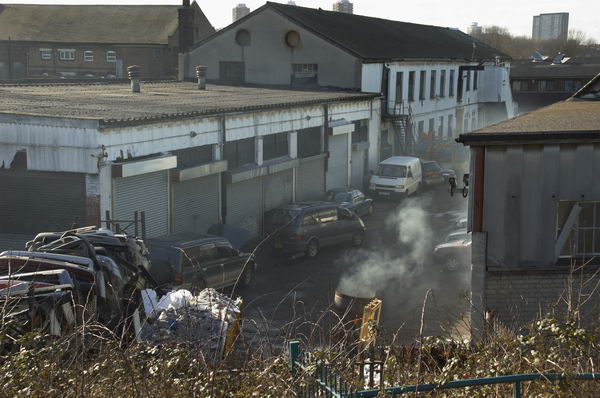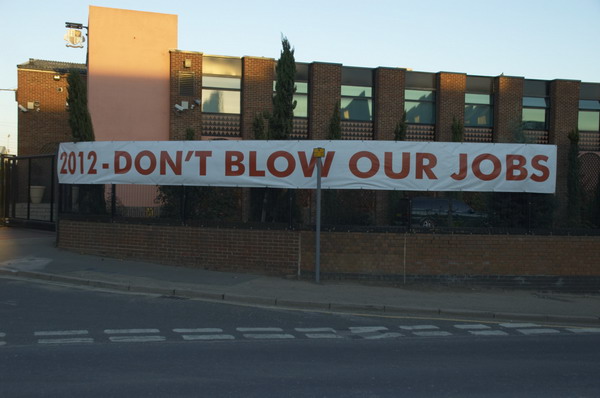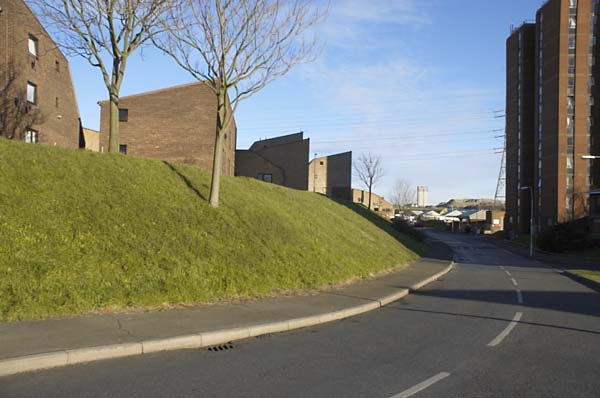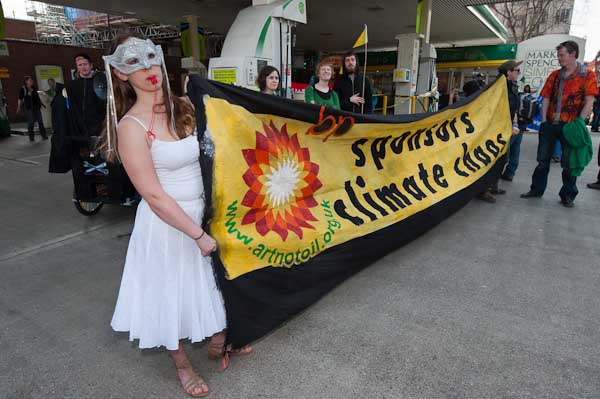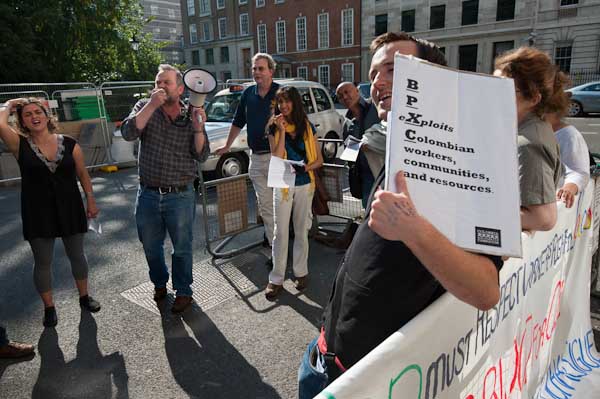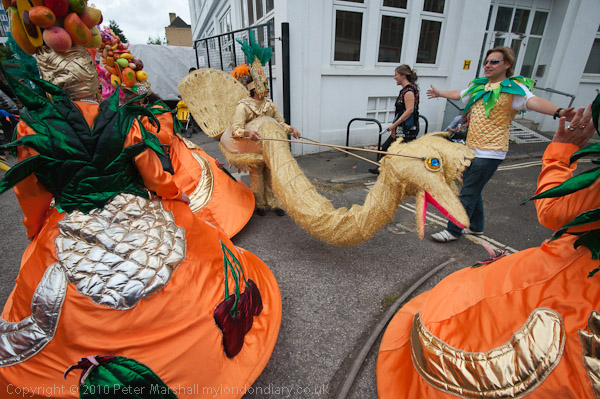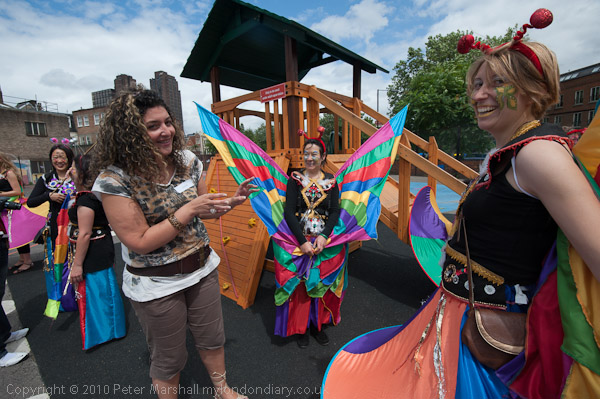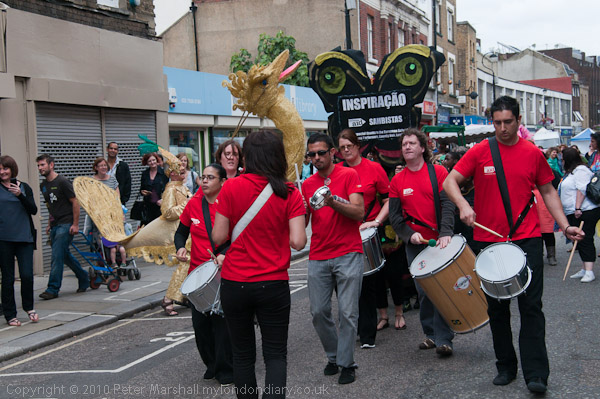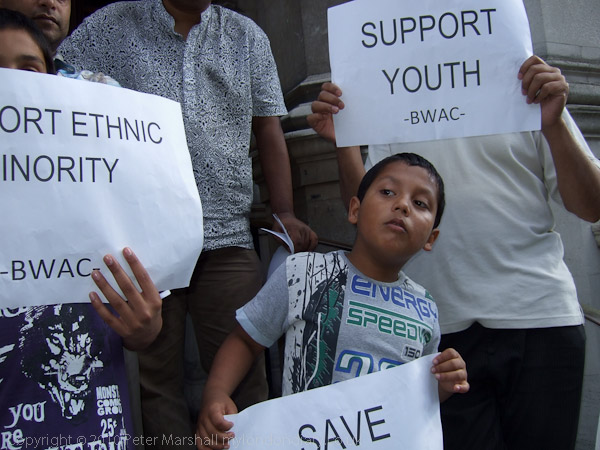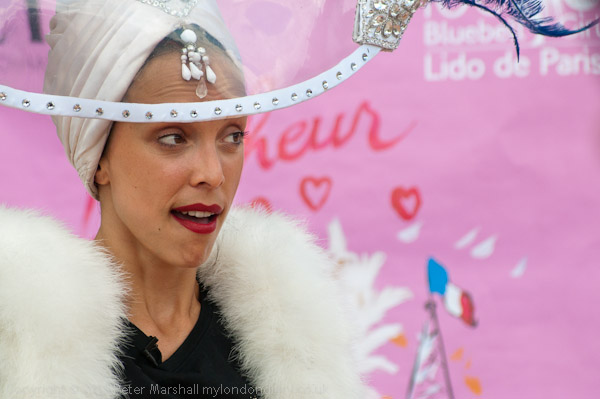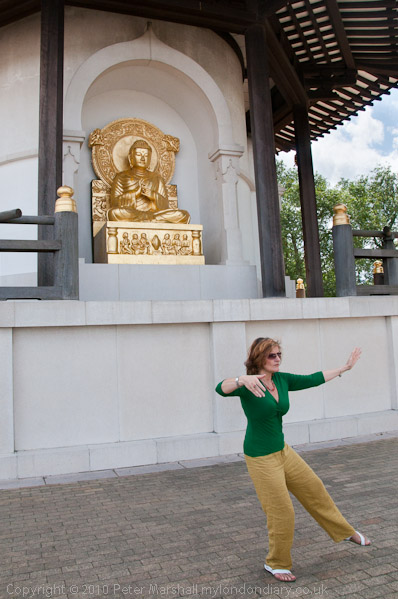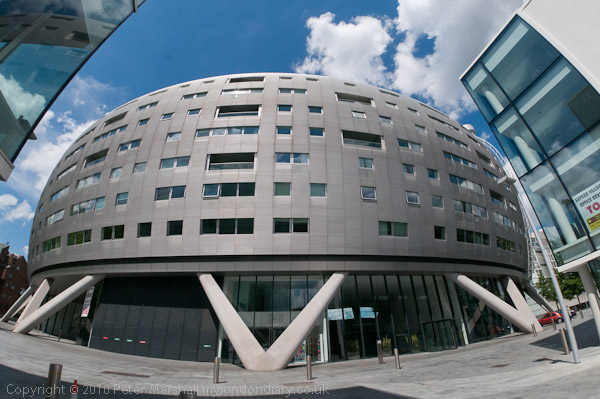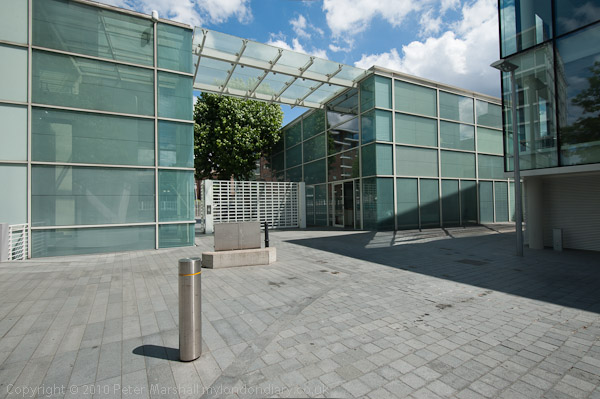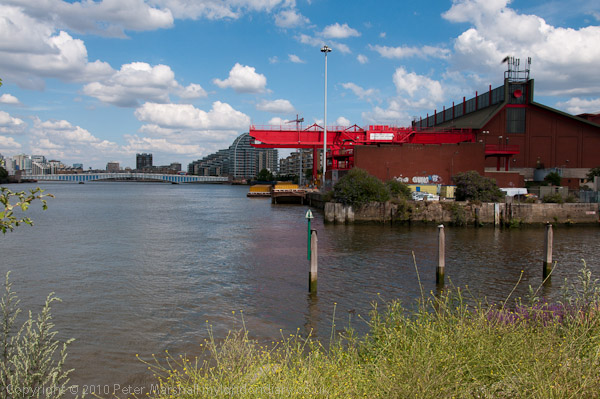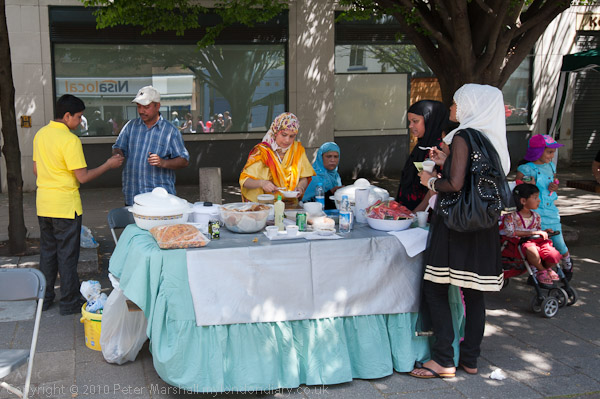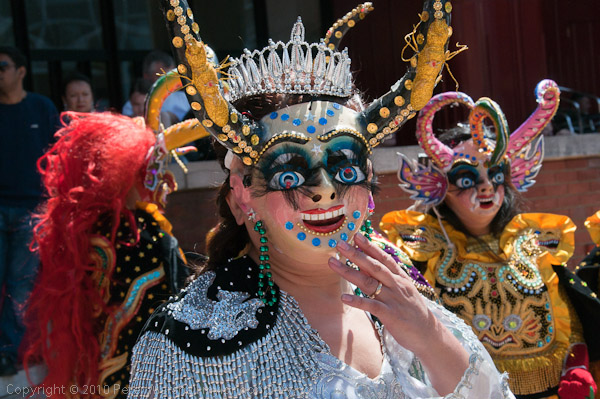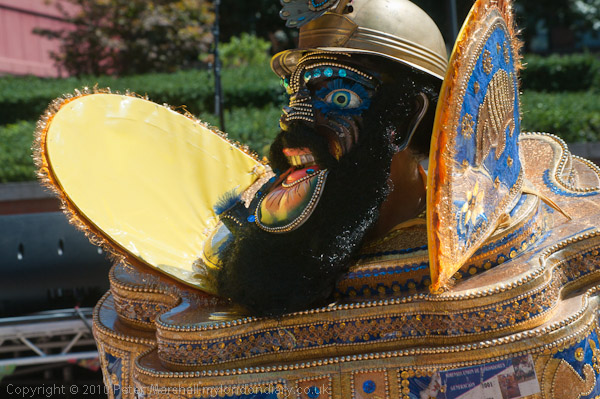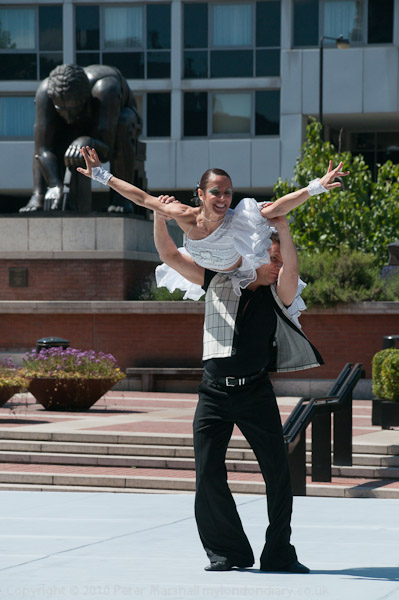The latest stage of the National Portrait Gallery/BT Road to 2012 project is on show (admission free) in the Studio gallery of the London National Portrait Gallery from now until 26 September 2010. It consists of a larger set of pictures from the project than previously shown by Brian Griffin along with some individual portraits of athletes by Bettina von Zwehl.
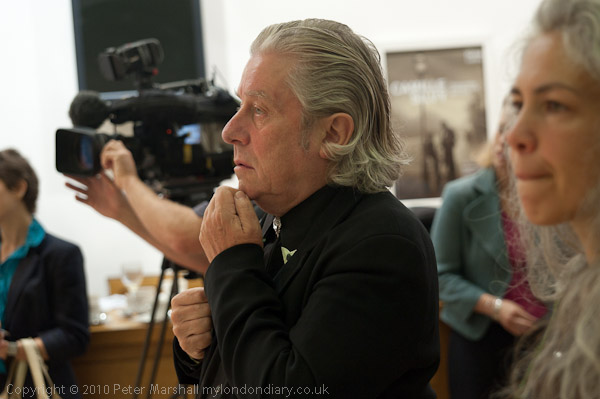
Brian Griffin listens to the speeches at the NPG
I think you can see all the pictures, along with much other material about how they were made on the NPG project web site although it seems to me to have an unnecessarily confusing interface to navigate. Of course seeing the pictures in reproduction on the web (click on them to see them larger) is no substitute for seeing the actual work.
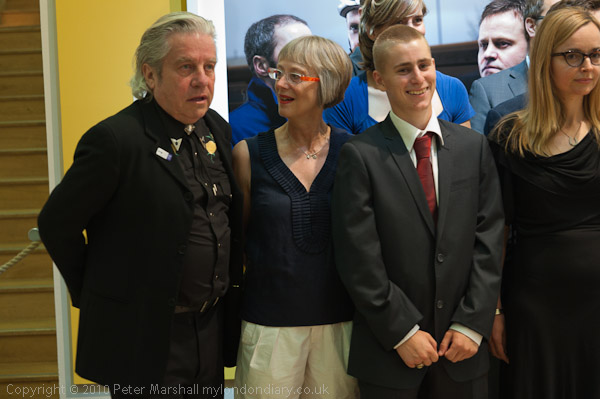
At the NPG non-Breakfast event
I went to the so-called “Breakfast Launch” of the show (an entirely breakfast-free event) where one of the athletes pictures, rower Katherine Grainger talked about being photographed by von Zwehl.
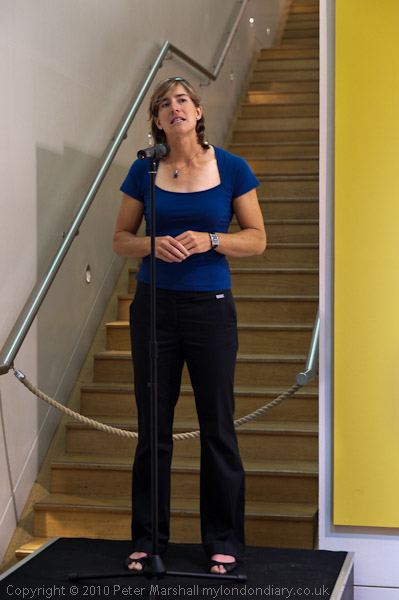
Katherine Grainger
Later I was able to photograph her standing beside the portrait of her (all photographs in this review are © Peter Marshall 2010, but included works by the photographers in the show in them are © Bettina von Zwehl – National Portrait Gallery/BT Road to 2012 Project or © Brian Griffin – National Portrait Gallery/BT Road to 2012 Project respectively.)
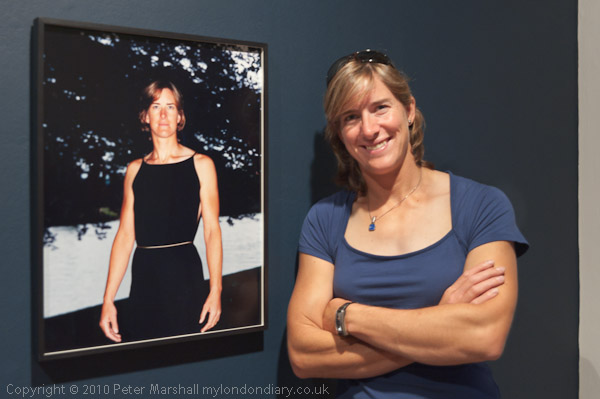
Katherine Grainger and her portrait by Bettina von Zwehl
It and the similar pairing of young weightlifter Zoe Smith I think typify the problem I have with her portraits.
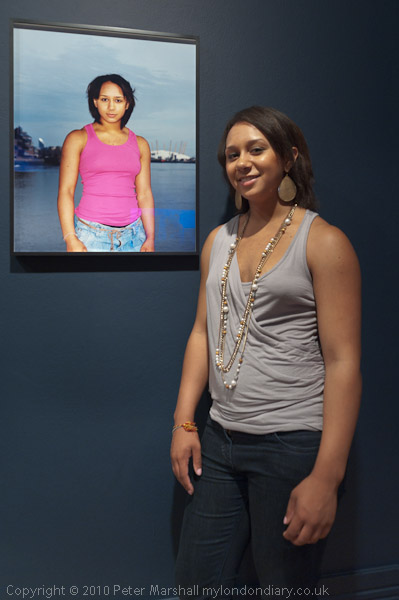
Zoe Smith and her portrait by Bettina von Zwehl
Somehow to me these portraits all look too much the same. And unfortunately they don’t seem to much resemble the real people who were used to make them. It’s a particular look which I think best suits sullen adolescents but none of those in the show fits that bill. They seem to be images that tell me more about the photographer than the sitter, which isn’t what I want from a portrait.
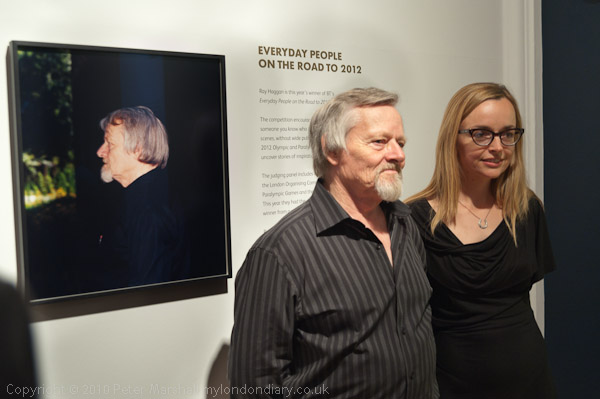
Roy Haggan won the Everyday People competition – his prize a portrait by Bettina von Zwehl – perhaps the most recognisable of those on show
As you can see, these pictures are surprisingly small – only moderately sized – and at this scale fail to demonstrate the kind of quality that the 8×10 camera can give. I’m not usually a fan of printing stuff large, but I do think these needed a greater scale, although I don’t think I would have found them any more convincing. One aspect of the larger format is that the subject stands out more from the background with the greater inherent depth of field, but here, combined with the over-lighting of the subject it often creates a kind of cardboard cut-out effect. Looking at a number of these I felt they would almost certainly have been improved by using only ambient light.
I know that von Zwehl is a very successful photographer and have admired some of her previous work, but I just don’t get these images. The gallery notes on the show describe them as “meditative observations of face, mood and physique” but I fail to find this in them. Doubtless it’s my loss.

Brian Griffin with his portrait of the Kenny Family including track cyclist Jason Kenny
I have long been a fan of Brian Griffin, and as well as producing interesting work he is always an interesting guy to talk to. These works show that he has lost nothing of his touch and the show includes several that can rank among his best over the years.
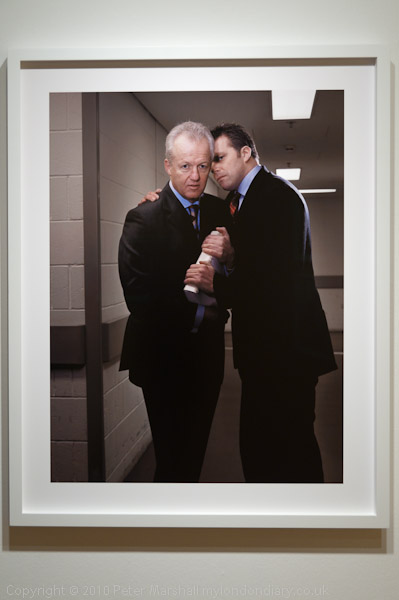
‘The conspirators’ – Simon Clegg and David Luckes
My favourite of the new works is one which I immediately christened “the conspirators“, perhaps a scene out of Hamlet, where David Luckes‘s right eye peers out over the shoulder of Simon Clegg. Both of them have a hand on the 395 page report written by Luckes in 2000 which persuaded the Mayor of London and the government to back the bid, and its white plastic spine is surely the murder weapon. Something very nasty is certainly about to happen! As we’ve now found out.
I’ve also included this image to show the framing of these works with a white border and a white frame, which I think as very effective.
There are others that struck me powerfully too. Ken Livingstone, posing with LDA Managing consultant Tony Winterbottom shows Ken pointing and Griffin makes powerful use of the frame with one finger pointing to his left exactly at its edge, and the other hand on the opposite edge above the open palm of Winterbottom, doubtless waiting for the cash to drop into it. Ken is of course wearing a red tie, the only touch of colour in the scene, taken in front of a dynamically sloping background at City Hall, reinforcing the dynamic thrust of Ken towards the frame edge.
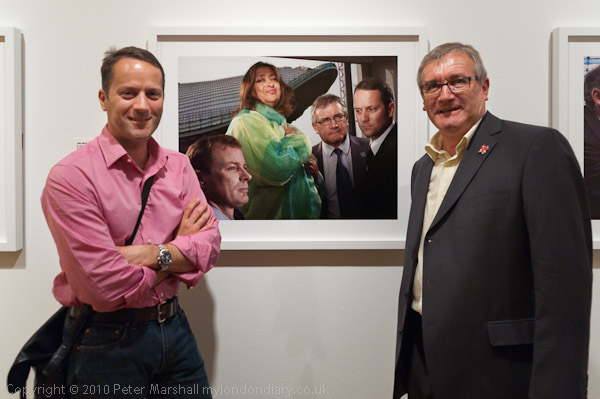
The Aquatic Team -Jim Heverin, Zaha Hadid, Stuart Fraser and Mike King
Many of those in Griffin’s pictures are men in grey suits (and some women too) but one dramatic piece of colour is provided by architect Zaha Hadid in a group showing the Aquatics centre team. Like many of his works this also illustrates his very theatrical use of lighting (and also some superb printing of his work.)
There are just one or two which I don’t think work, some where perhaps he seems to almost be parodying his own work, and others that just don’t quite come off. But overall he is creating a powerful set of work. It may well be the best thing to come out of the Olympics.
[My own ‘Olympic’ contribution is the book of pictures ‘Before the Olympics: The Lea Valley 1981-2010.’]


